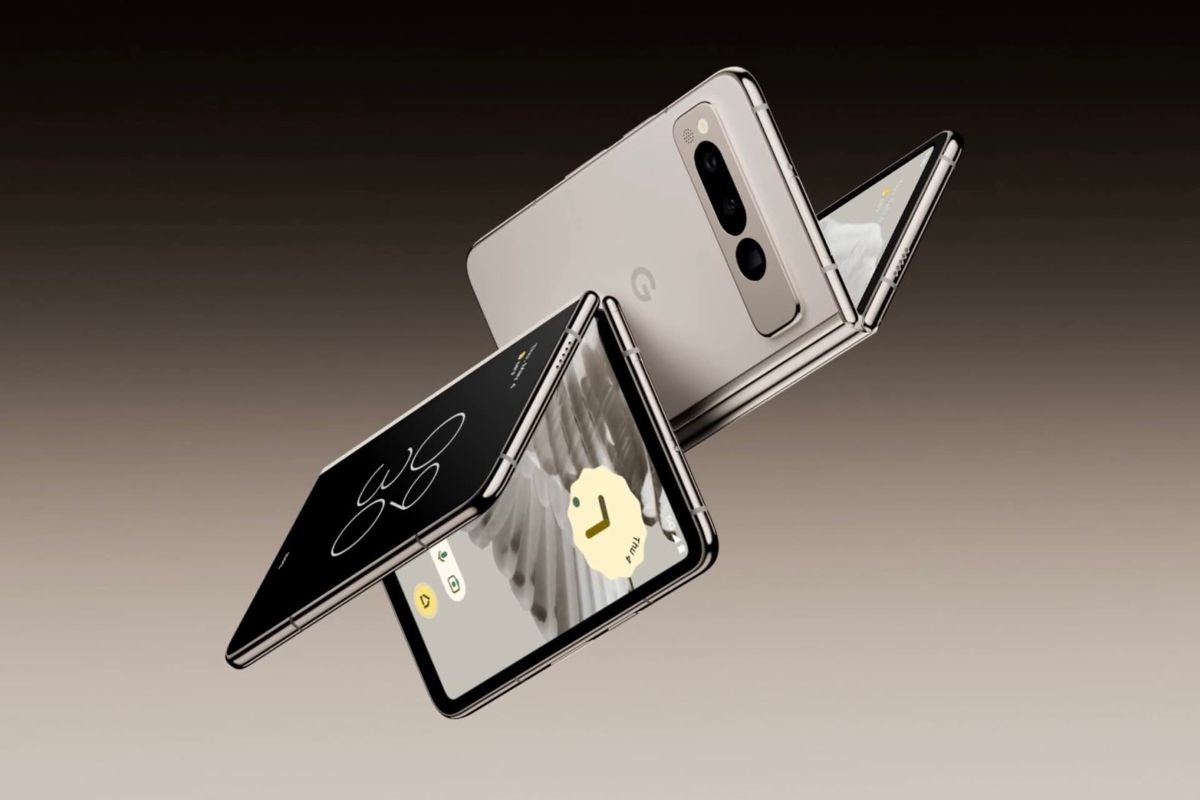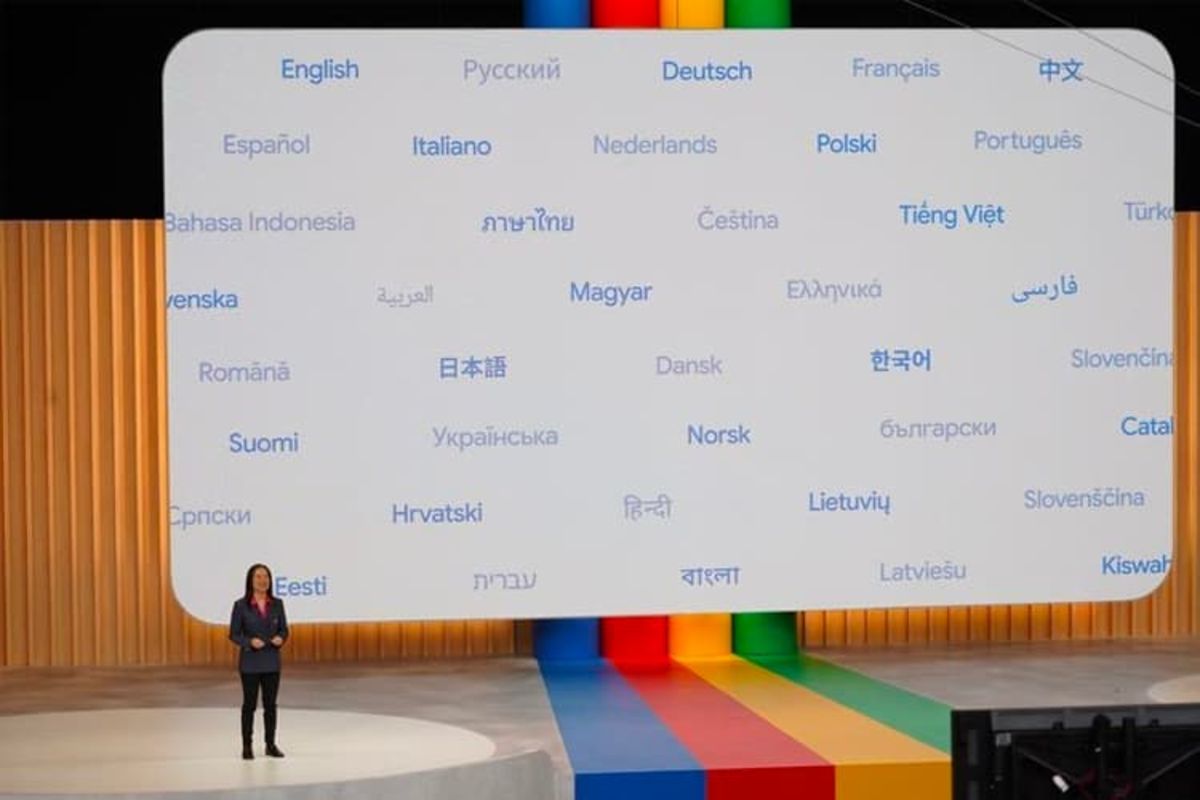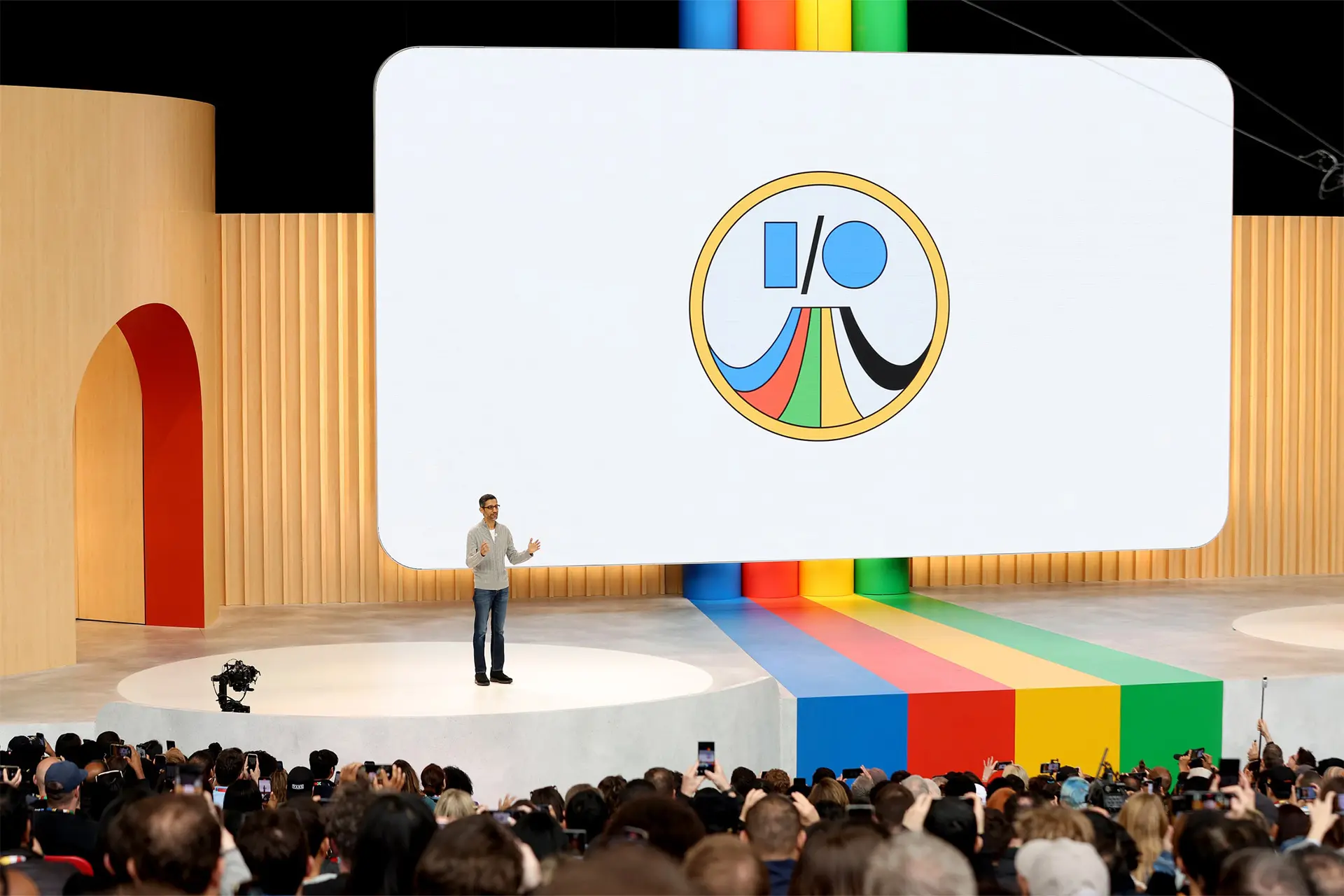Google I/O Or Google AI? The Problem Is This!
At This Year’s Google I/O Conference, Google Appeared On Stage With An Unimaginable Focus On Artificial Intelligence To Make Up For Its Lagging Behind In This Controversial Field.
In the past few months, Google has experienced turbulent times in artificial intelligence, and it seemed to lose the competition to Microsoft and its advertising controversy over ChatGPT.
The company that played a vital role in the creation of the transformer neural network, on which major language models such as GPT are based, was now so far behind the chatbots and other productive artificial intelligence tools that even the launch of Bard could not gain the credit that Microsoft It had quickly earned with ChatGPT and Bing Chat, it returned to Google.
From the story of scientific error and plagiarism to the resignation of Jeffrey Hinton, the godfather of artificial intelligence, from Google after ten years and his warning about the dangers of this technology, Google needed a rebirth in an area in which it had invested more than any other company (nearly $4 billion).
And what better opportunity than the Google I/O conference? A conference with such a focus on artificial intelligence that even its hardware products, including Pixel phones and tablets, did not benefit from the capabilities of this technology.
Maybe it would be better if the name of Google I/O was changed to Google AI this year. The truth is the excitement, and tantalizing potential of artificial intelligence are irresistible. When Google promises to make this technology “more useful and useful for everyone,” we want to believe it. But is the world ready to face language models developing at lightning speed and getting smarter every moment?
Or, according to the trailer of Oppenheimer’s film, which is about the father’s life of the atomic bomb, technological giants are giving humans the power to destroy themselves, and the world is not ready for this change?
Ten critical events that happened at the Google I/O 2023 conference
1- Introducing Pixel Fold; Google foldable with pure Android and attractive design

Pixel Fold is Google’s first project in the foldable phone market, whose form factor is reminiscent of Samsung’s Galaxy Z Fold series phones, but it is slimmer than the Fold 4.
The technical specifications of the foldable Google Pixel Fold with a price tag of $1,799 make this phone a new competitor for the Galaxy Z Fold 4; 5.8-inch external display and 7.6-inch internal display, both of OLED type with a refresh rate of 120 Hz with a brightness of about 1500 nits. Tensor G2 processor, which we have seen before in Pixel 7 and Pixel 7 Pro; 12 GB of RAM with 256 or 512 GB of storage memory; 4,800 mAh battery with 30 W charging power; Equipped with five cameras, including a 48-megapixel primary camera, a 10.8-megapixel ultra-wide camera, and a 10.8-megapixel telephoto camera with five times magnification.
Google says it has optimized more than 50 of its apps to take advantage of the Pixel Fold’s large internal display. The Pixel Fold will launch with Android 13 next month and receive Android and security updates for up to five years.
2- Introducing Pixel Tablet; Pleasant pure Android experience on a bigger screen

After much speculation, Google officially unveiled the Pixel tablet at I/O 2023, along with a charging dock that turns it into a bright home display.
The Google Pixel tablet uses the same Tensor G2 chip, and its design reminds us of the Pixel 3 with those rounded edges. The 10.95-inch LCD screen of this tablet offers a resolution of 2560 x 1600 and a maximum brightness of 500 nits and is compatible with stylus pens from other companies.
The critical difference between the Google Pixel tablet and other tablets launched so far is that this device can be used as a Smart Display Assistant and is entrusted with managing many environmental tasks, especially in smart homes.
Pixel tablet with 8GB of RAM and 128GB and 256GB of UFS 3.1 storage with a price tag of $499 and $599 will be released on June 20 (June 30, 1402).
3- Introducing Pixel 7a; Google’s mid-range with a 90 Hz display and a powerful camera

Google’s Pixel 7a, the low-cost member of the Pixel 7 series, is slightly more expensive this year than in previous years, with a price tag of $499, but it does offer some great features like a 90Hz refresh rate and support for wireless charging.
Pixel 7a also benefits from new cameras; A 64-megapixel primary camera with a 72% larger sensor than the previous generation and a 13-megapixel ultrawide camera with a 13-megapixel selfie camera.
This 6.1-inch phone uses the Tensor G2 chip and 8 GB of RAM, and 128 GB of storage.
4- Introducing PaLM 2 language model; From an expert in medical questions to cyber security

The PaLM 2 language model was the flagship of Google I/O’s artificial intelligence-focused event. The model, which has already increased the power of reasoning and logic, is trained based on multilingual data from more than 100 languages and should include a family of products with different capabilities.
This system will be available in different versions for users and organizations. The data it was trained on includes four versions named Gecko, Otter, Bison, and Unicorn, respectively, from the smallest to the largest.
For example, one version of PaLM 2, called Med-PaLM 2, is trained solely on medical data and, according to Google, can answer questions similar to those found on the United States Medical Licensing Examination (USMLE) at the “expert” level.
Another version of PaLM 2, Sec-PaLM 2, is also trained on cybersecurity data and can “explain the behavior of malicious scripts and help users identify code containing malware.”
The lightest version of PaLM 2, Gecko, is small enough to run on smartphones and process 20 tokens per second, equivalent to about 16 to 17 words. Although this model offers more limited capabilities than the larger versions, it has fewer privacy concerns because it runs locally.
5- Google finally brought an artificial intelligence chatbot to the search engine

Although Google is developing chatbots, it is not as interested in them as its competitors. It does not show a desire to turn its search results page into something similar to ChatGPT. Instead, it wants to place AI in the heart of search results; In this way, on top of the traditional outcomes, a new section is displayed that contains the AI answer to the user’s question in a summary form. Three links will be to the right of the AI, a description that “confirm” the generated response.
Google calls the answer produced by artificial intelligence in its search engine AI snapshot; All answers are generated with the help of Google’s large language models and using resources available on the Internet.
Google’s search engine is now powered by several of Google’s advanced language models, including the new PaLM2 multitask model and the Multitask Unified Model. The Google results page has also taken on a new look; A colorful design based on artificial intelligence. The AI snapshot occupies almost the entire first page in the latest results page, especially in the mobile version.
To access AI answers, you must join a Search Generative Experience program. The queue for access to artificial intelligence in Google Search starts today in the Google app and the Google.com page on the Chrome browser, and the first test users will be accepted in the coming weeks.
6- Magic Editor; Professional image editing with artificial intelligence

The artificial intelligence tool Magic Editor introduced for Google Photos, with the help of artificial intelligence, which we have seen in the Dall-E and Midjourney image generators, performs professional photo editing for the user on the level of Photoshop.
From the demo that Google showed off the capabilities of Magic Editor, it can be said that this tool offers several capacities, including moving the subject to a better point in the image, changing the size of the issue, changing the color and amount of clouds in the sky, or erasing waste from photos.
Google announced that Magic Editor would be available for some Pixel phones later this year to use user feedback to improve the tool.
7- Added positioning with realistic and live route display to Google Map

Last year, by adding the Immersive View feature to Google Maps, Google provided conditions for the users of this application to get a view of their desired destination. Soon this feature will be added to the daily navigation so that users can get more details of the route ahead.
The mentioned feature can make the route look more beautiful and show a general overview of tourist attractions and other parts that can be attractive to you by displaying the way in more detail. The primary purpose of Immersive View is to show pieces that will probably be important and useful for you during a leisure trip.
Google plans to add Immersive View to more than 15 cities by the end of the year. Using artificial intelligence and massive computing power, this feature combines billions of aerial images and images recorded through Street View to create a 3D image.
8- General release of Google Bard for more than 180 countries with Persian language support

One of the most important reasons for the failure of Bard from Bing Chat and ChatGPT was the limitation of its use and the lack of support for the Persian language. Until now, this chatbot was only available to US and UK users. Google announced at the I/O 2023 conference that users in more than 180 countries no longer need to register and be on the waiting list to access this chatbot.
Google says that besides English, Bard now supports Korean and Japanese languages. In the future, support for the top 40 languages in the world, which fortunately includes Farsi, will be added to it.
Changing Bard’s language model to PaLM 2 has enhanced the AI chatbot’s reasoning, math, and coding skills. Currently, this chatbot’s database supports 20 widely used programming languages. Users can get help from Bard for tasks such as coding, debugging, or exporting code to various platforms such as Google Colab.
9- Google cooperation with Adobe FireFly to bring the image generator to Bard

At the Google I/O event, Mountain View announced a partnership with Adobe to add FireFly features to the Bard chatbot to compete seriously with BingChat equipped with the Dall-E image generator. Users can use this feature to directly produce and edit their desired photos using the chatbot command line and share them with others.
According to the published reports, the output of the images produced in Bard has the same quality as the FireFly beta version users had experienced; Because the FireFly service is connected to the source of high-quality Adobe Stock images, and users can freely share all produced content with others.
The ability to use FireFly will be available to Bard users in the coming weeks.
10- Adding a productive artificial intelligence tool to Workspace

Google will equip all Workspace applications, including Docs, Sheets, and Slides, with practical artificial intelligence under Duet AI for Workspace.
Users can use Duet AI to write job descriptions and creative stories or automatically generate spreadsheets to manage data. The tool can also create complete PowerPoints, suggest text for slides, or develop custom visuals on the fly.
Duet AI appears to be Google’s answer to Microsoft’s 365 Copilot, which uses some of the company’s productivity tools to make Office software more creative and functional.


















